Summary | Key concept | Science Story | Background Science | Activity | Curriculum links | Linked Activities
- Suggested Age Range: 7 – 8 years; 10 – 11 years
- UK Primary Curriculum: Key Stage Two (lower); Key Stage Two (upper)
- Suggested UK Year Group: Year 3; Year 6
- UK Primary Curriculum Link: Light (Y3&Y6)
- Science Subject: The Sun
- Science Question: Why does the Sun hurt your eyes?
- Activity type: individual or pairs
- Suggested linked stories: The Sun Sisters (Y3); Sun Shell and Moon Shell (Y6)
Safety warning: NEVER look directly at the Sun. Always use indirect methods of projection, as illustrated in this activity. The Sun can permanently damage your eyesight and can lead to blindness if viewed unsafely.
Brief summary: The Sun is a star powered by nuclear reactions and is incredibly powerful. It is vital for life on Earth, providing the heat and light we need in order to survive and for the food chain to operate, but it is so powerful that it must be viewed very carefully in order to avoid damage to the human eye.
Key concept: The Sun’s strong heat and light are vital for life but can damage the human eye.
Key words: Sun, light, bright, brightness, intensity, shrink, expand, protect, project
Visuals: Short video showing how dangerous light from the Sun can be, and why you should NEVER look a the Sun through a telescope: https://wesharethesamemoon.org/resources/activities/extras/SunViewer_telescope.MOV
The Science Story:
Have you ever woken up in the middle of the night? How much light can you see?
In the middle of the night there is much less light than there is during the day. Even when the Moon is in the sky and shining brightly, everything still looks much darker than it does when the Sun is up.
Imagine it is night and you turn on the light to find your favourite toy. How much can you see when you turn off the light?
Your eye is very clever. The black circle in the middle is called the pupil and it grows and shrinks depending on how much light there is. In the middle of the night, when it is dark, your pupil gets bigger to let in as much light as possible, this is why you can see in the dark. If you turn on the light in the middle of the night, your eye makes the pupil shrink to let in less light. When you turn off the light to go back to sleep, the pupil is now very small. It doesn’t let in much light at all. Because it is dark, you now can’t see anything! You have to wait for your pupil to expand before you can see in the dark again.
Try screwing up your eyes now. Find a partner and sit opposite them so you can see their eyes. Now, everyone close your eyes really tightly! No peeking! Keep your eyes closed until I tell you to open them. I’m going to count backwards from five, when we get to zero open your eyes and watch what happens to your partners eyes.
Is everyone ready? Five. Four. Three. Two. One. Open your eyes! Did you see what happened?
When you closed your eyes, your pupil got bigger to try to help you see better in the dark. When you opened your eyes, your pupil shrank again to help you see better in daylight. (The students might want to try that game a second time.)
On a very bright sunny day your pupil will shrink as small as it can go to try to protect your eye from too much light.
How can you help your eye protect itself from strong sunlight?
To help protect your eye from too much light you can wear sunglasses. They have dark lenses, so they help stop some light from the Sun reaching your eye.Astronomers and scientists want to study the Sun, they want to understand how it works. But it is far too bright to look at directly, it hurts your eyes and can damage them forever.
So how can we study the Sun?
We have to study it by looking at images of the Sun, we can project a picture of the Sun onto a screen so that it is safe to look at.
The Science: The Sun is a star, like any other, and is powered by the same process: nuclear fusion reactions at its centre. These reactions generate the heat and light that make the Sun so bright in the sky. The Sun has a surface temperature of roughly 6000 degrees Celsius. The colour of a star is determined by its surface temperature. Stars hotter than the Sun are more blue in colour and can have surface temperatures in excess of 10,000oC. Stars that are smaller and cooler than the Sun, as low as 3000oC, are much redder in colour. Stars similar to the Sun are usually yellow in colour.
The colours of the rainbow, red through to violet, are only part of the story with light. Visible light is small part of the electromagnetic spectrum, which stretches from red light down in energy through infra red, microwave and radio, and up in energy from blue light through ultraviolet, X-ray and gamma-ray radiation.
Most of the Sun’s energy is emitted in the visible part of the spectrum, and it is likely that because of this fact that humans, and most other animals, evolved eyes that work in this part of the spectrum. The Sun also emits across the spectrum though, sending radiation out from low-energy radio waves to high energy gamma rays, and everything in between. This is not unique to the Sun, every star emits across the whole spectrum. Infrared radiation from the Sun is what we feel as heat, while the ultraviolet part of sunlight is what gives us sunburn and can damage your eyesight.
While the eye is tuned perfectly to the peak of the Sun’s visible light, and is very good at adapting to different light levels thanks to the contraction and dilation of the pupil, there is only so much light that the eye can cope with. Too much light causes most people to react by looking away or covering their eyes instinctively, as a way to protect the eye and prevent damage from too much energy.
When the astronomer Galileo was first experimenting with early telescopes, he looked at the Sun using simple arrangement of lenses. This focussed not just the visible light, but also the heat of the infrared rays, on the back of his eye. As there are no pain receptors in the retina, he felt no pain, but he later went blind as a result of the damage caused to his eyes.
The activity: In this activity students will construct and use a safe indirect sun viewer (without lenses) that allows them to view the Sun safely by projection with no risk to their eyesight. It is important to follow the instructions carefully and ensure careful supervision of the students while using the viewers.
Props required:
- Cardboard box (one per student), shoeboxes and cereal packets work well
- Kitchen foil
- Tape
- Scissors
- Needle
- A sunny day
Safety note: It must be stressed that you must NEVER look directly at the Sun as this can permanently damage your eyes.
Safety note: Care should be taken with scissors when cutting the boxes, and students should be supervised closely.
- You will need one cardboard box to build your sun viewer (image).
- At one end of the box, cut a rectangular window three centimetres wide at one edge of the box (image).
- At the other end of the same side of the box, cut a larger hole, about 5 centimetres wide.
- Cut a piece of white paper to the same size as the end of your box (image).
- Carefully push this paper into the box through one of your holes, letting it fall to the bottom so that it is opposite the two holes you have already cut. This paper acts as the projection screen where the image of the Sun will appear (image).
- Cut a piece of foil large enough to cover the 3cm hole (image). Hold this foil up to the light and make sure there are no holes in it (image). If there is a hole, throw it away and cut another piece.
- Carefully use the foil to cover the 3cm hole and tape it securely to the box (image).
- Tape over any other holes in the box so that no light comes in when you look through the 5cm hole (image).
- Take a needle (or other small sharp object) and VERY CAREFULLY make a small hole in the middle of the foil. You can experiment by making holes of different sizes but small holes work best (image).
- Take your completed sun viewer outside on a sunny day and stand with your back to the Sun (image).
- Hold up the box so that the Sun falls on the foil.
- When you have the box lined up just right, you should see a small image of the Sun on the white paper at the back of the box (image).
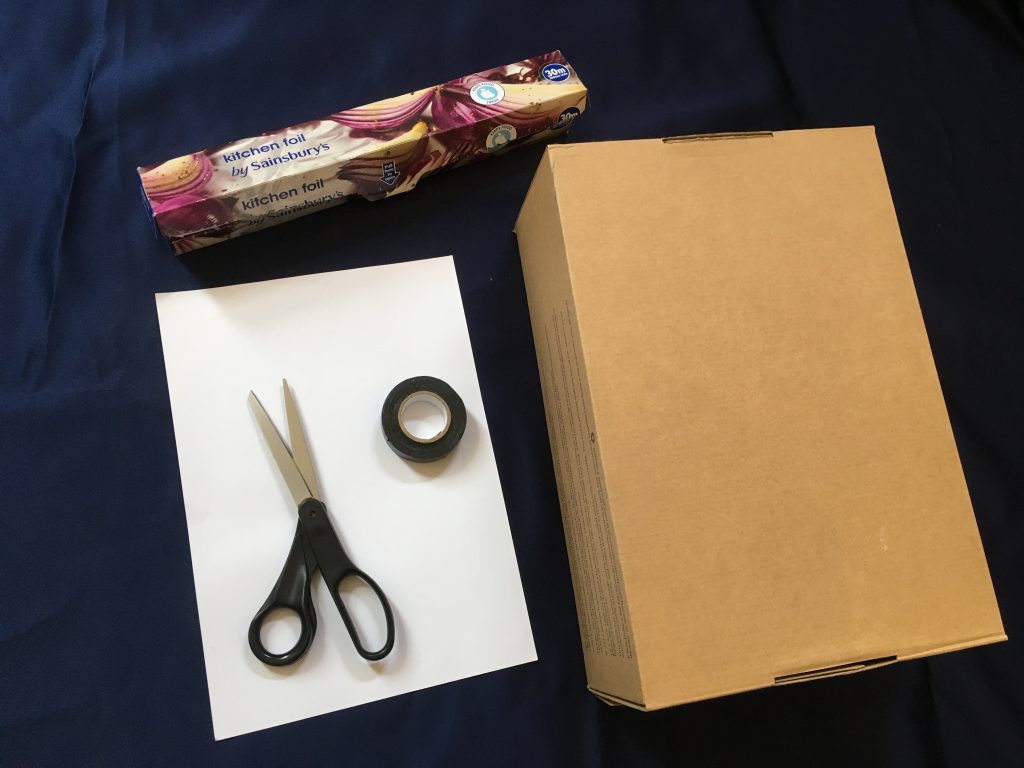
Step 1: the materials needed. 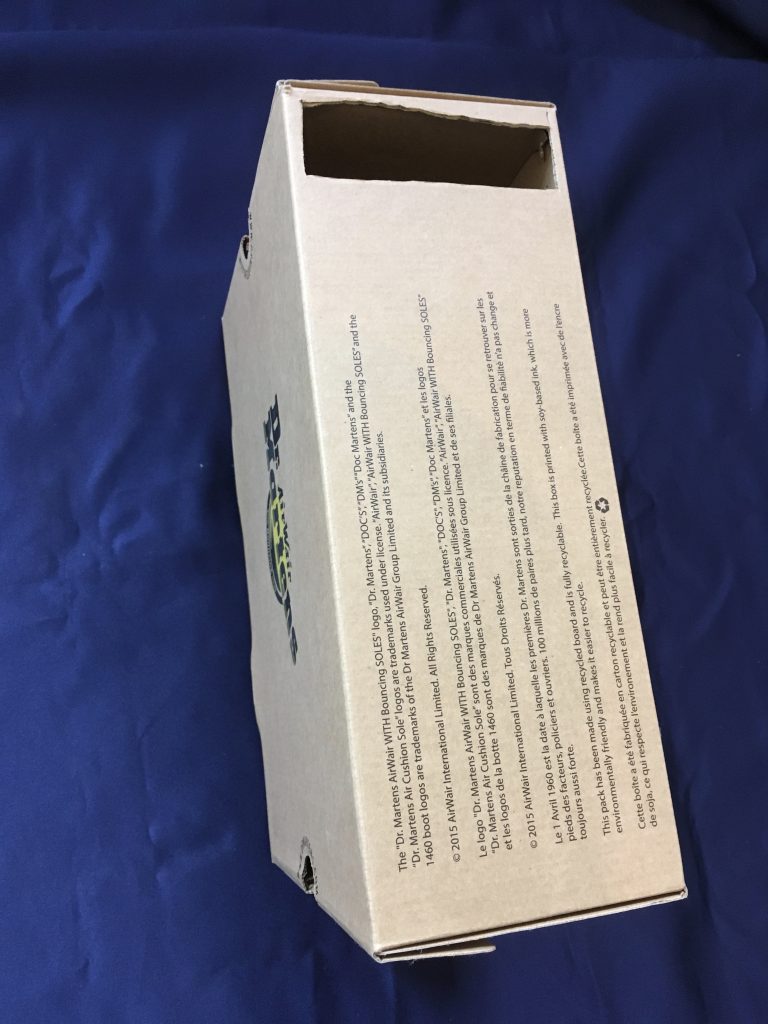
Step 2: cut a 3cm hole at one end of the box. 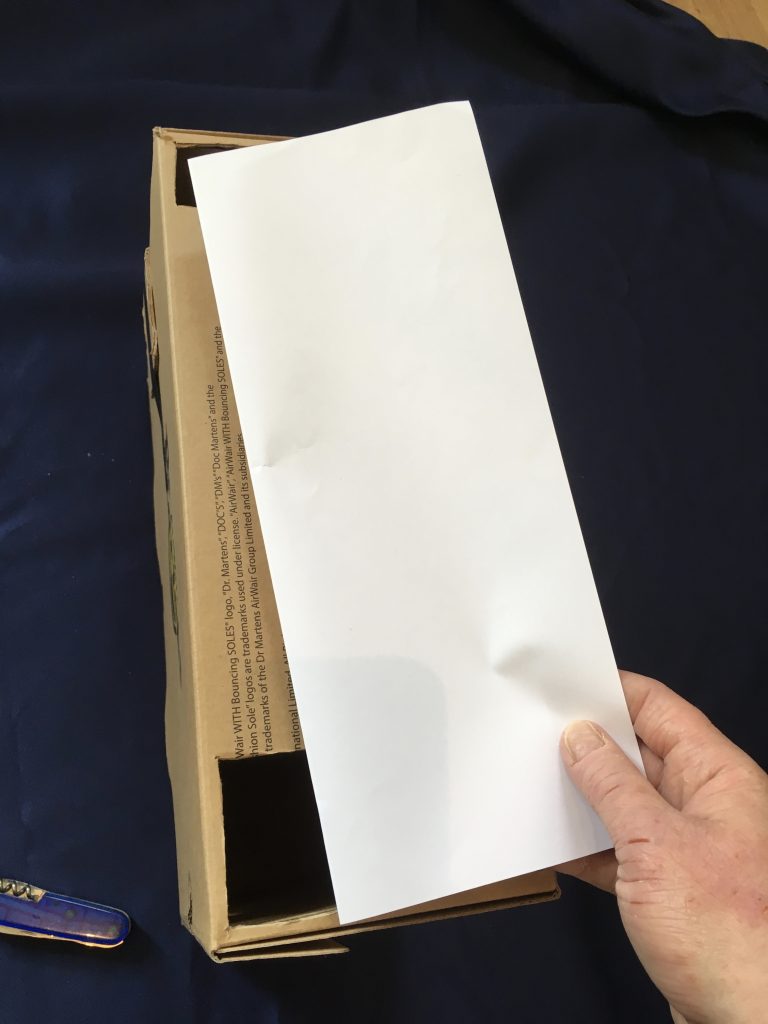
Step 4: cut a piece of paper to fit the side of the box. 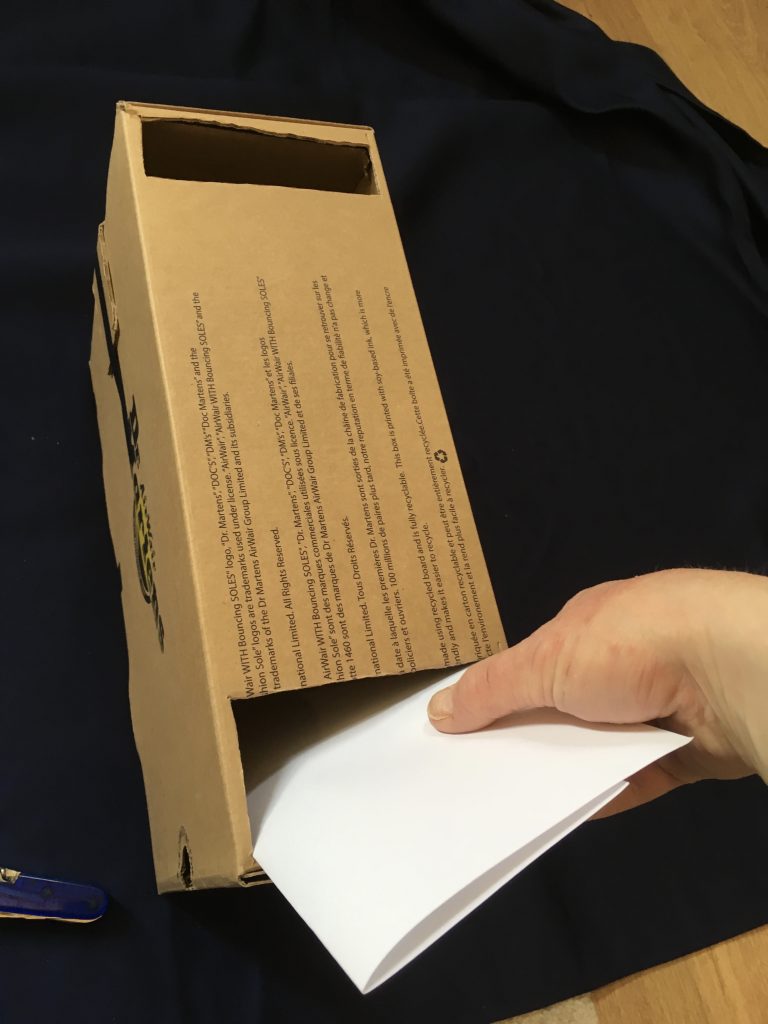
Step 5: insert the screen. 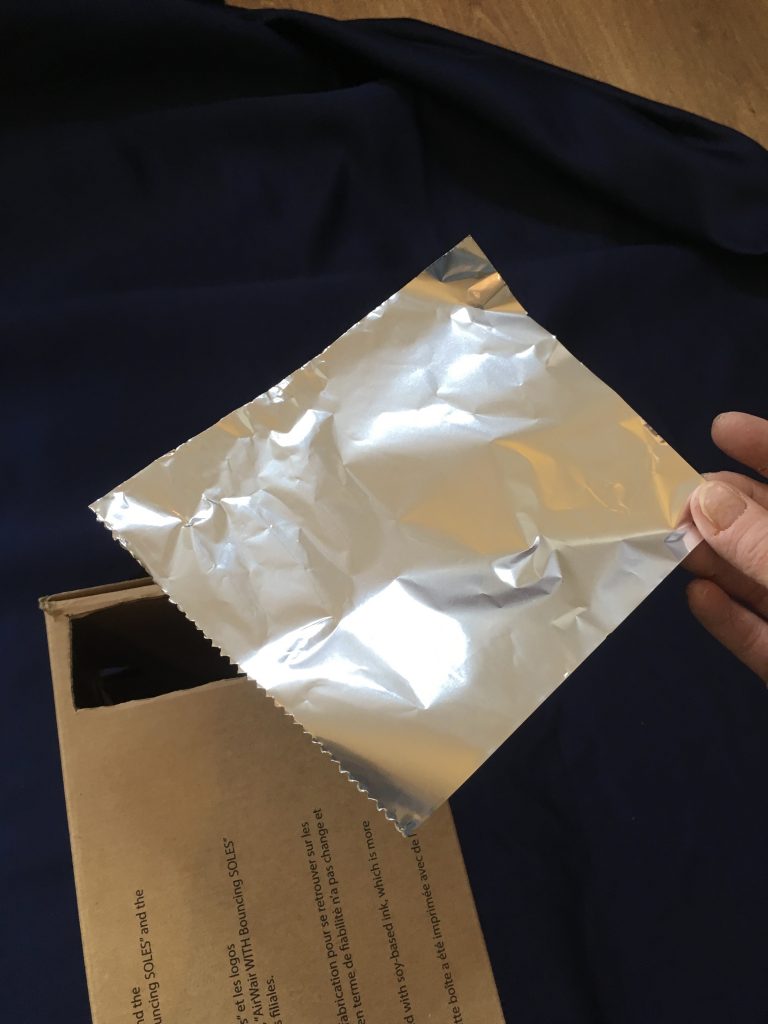
Step 6: cut a piece of foil. 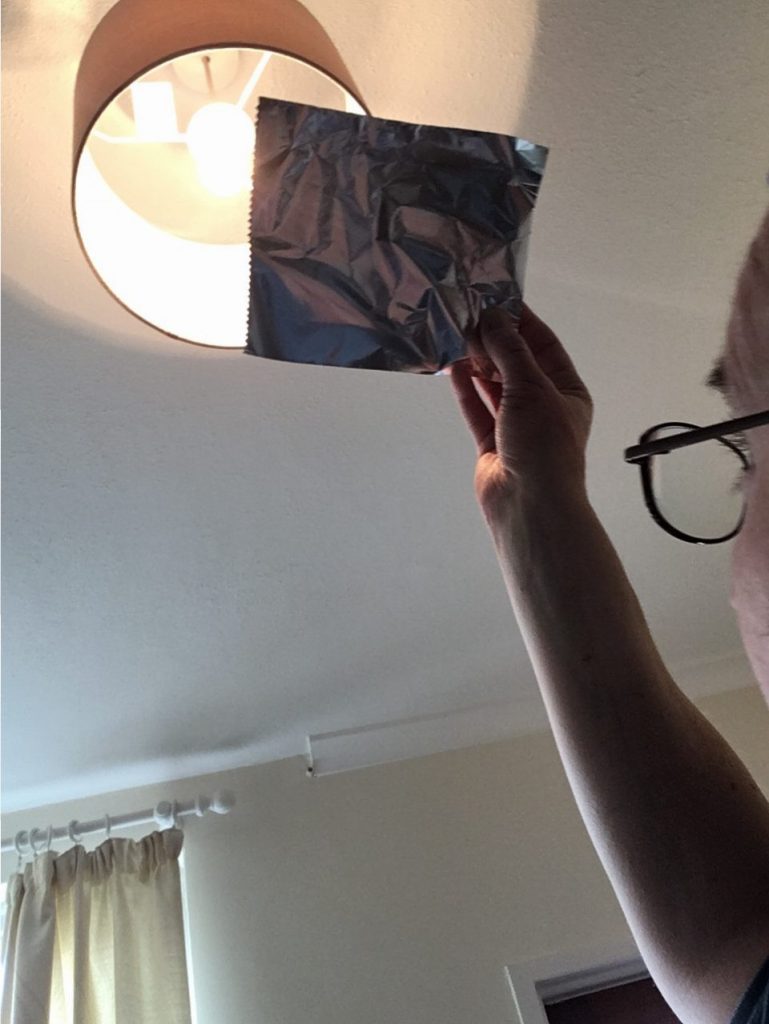
Step 6: check for holes. 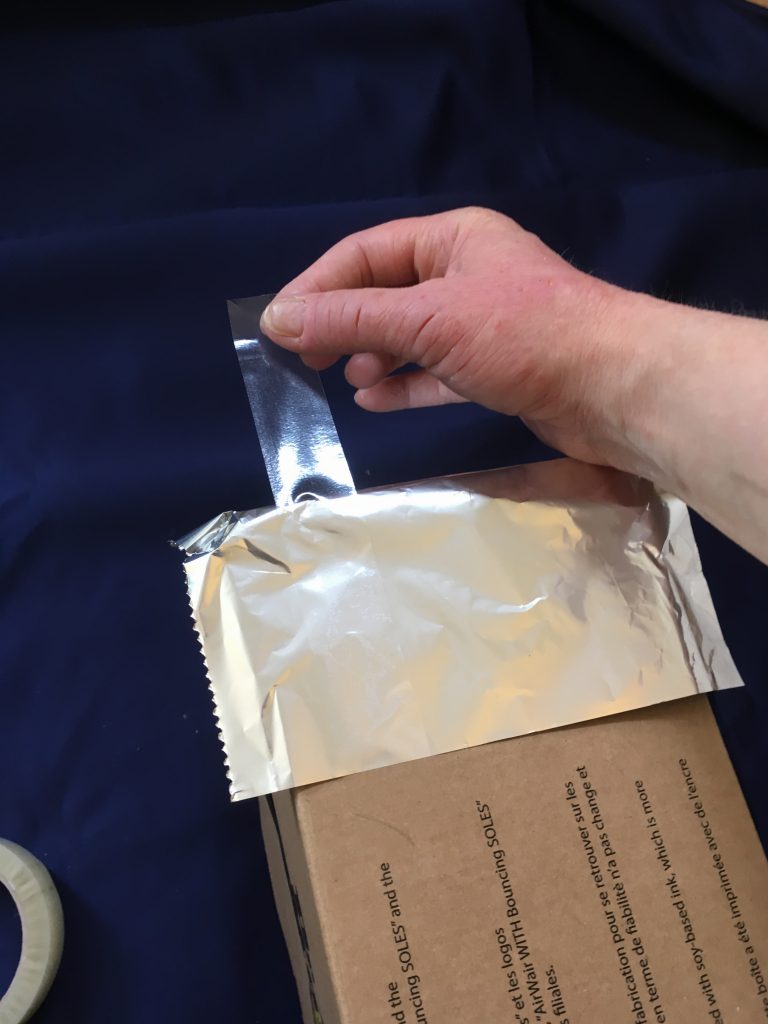
Step 7: tape the foil over the 3cm hole in your box. 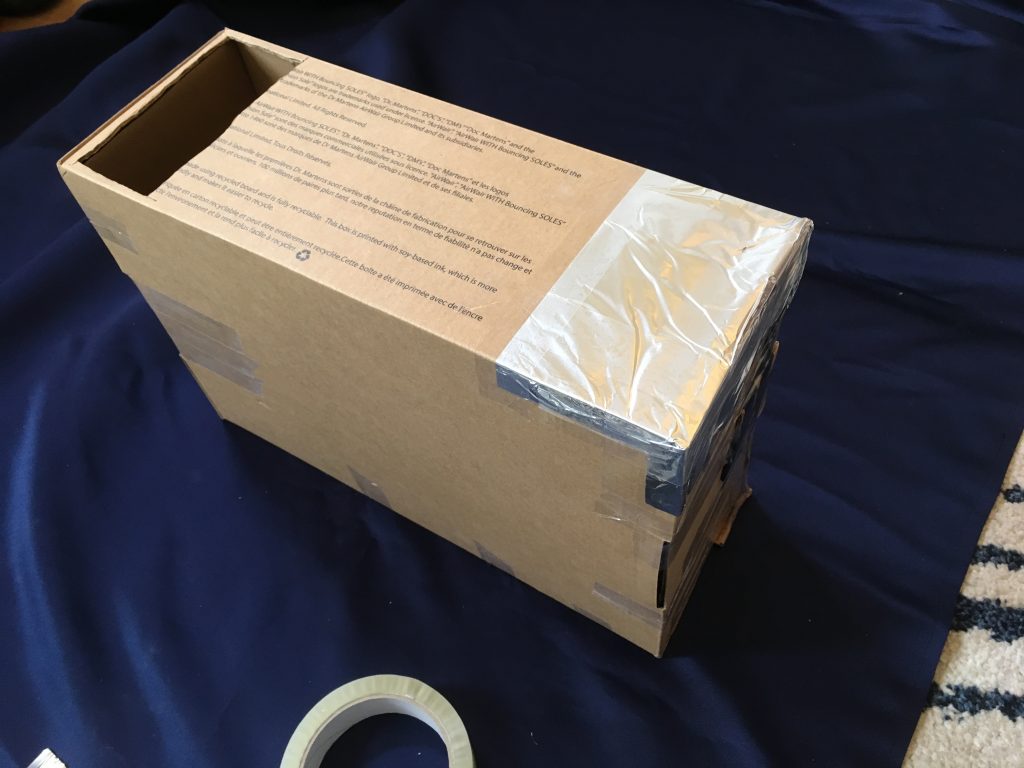
Step 7: the completed foil. 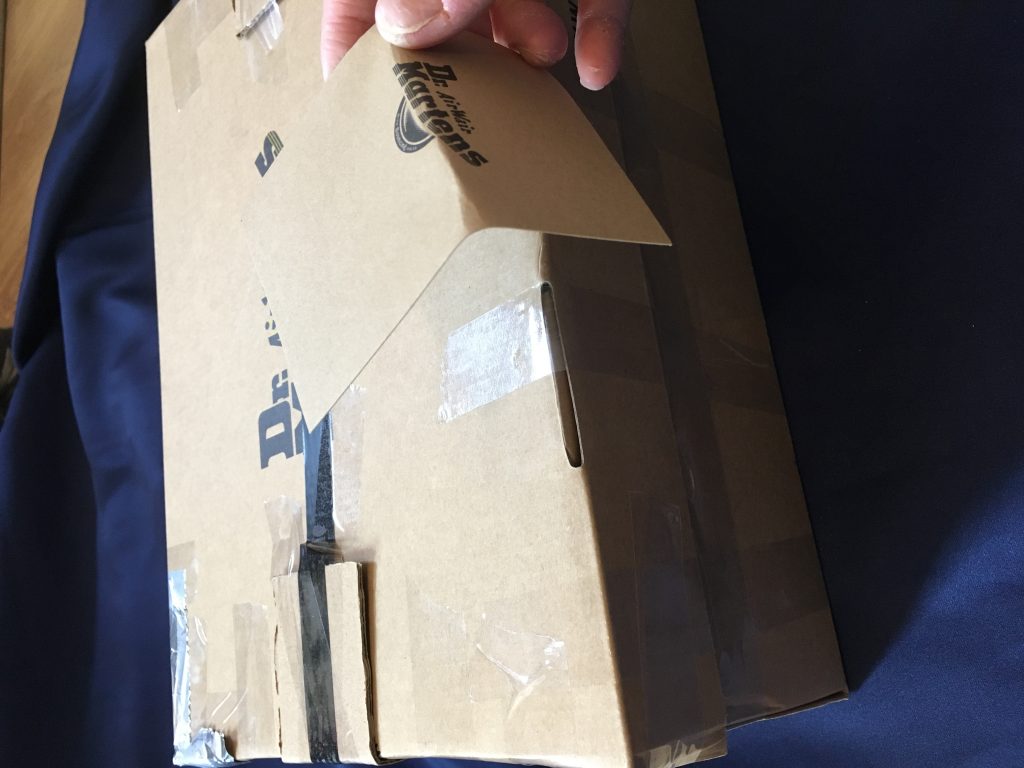
Step 8: cover any holes in the box. 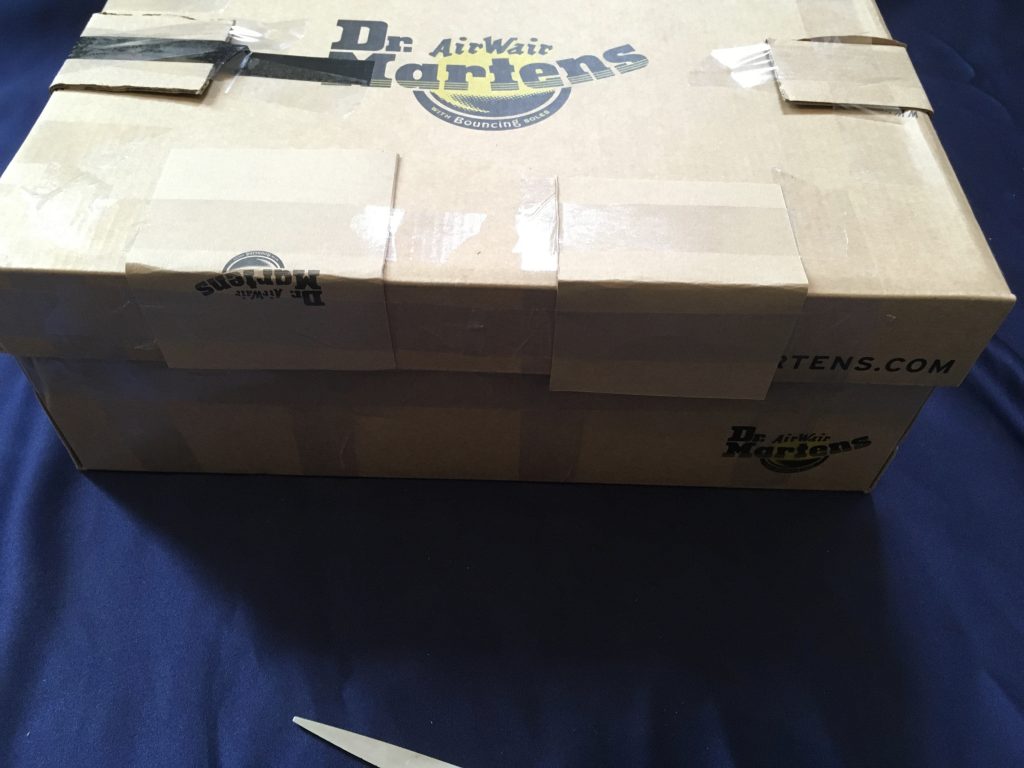
Step 8: holes covered. 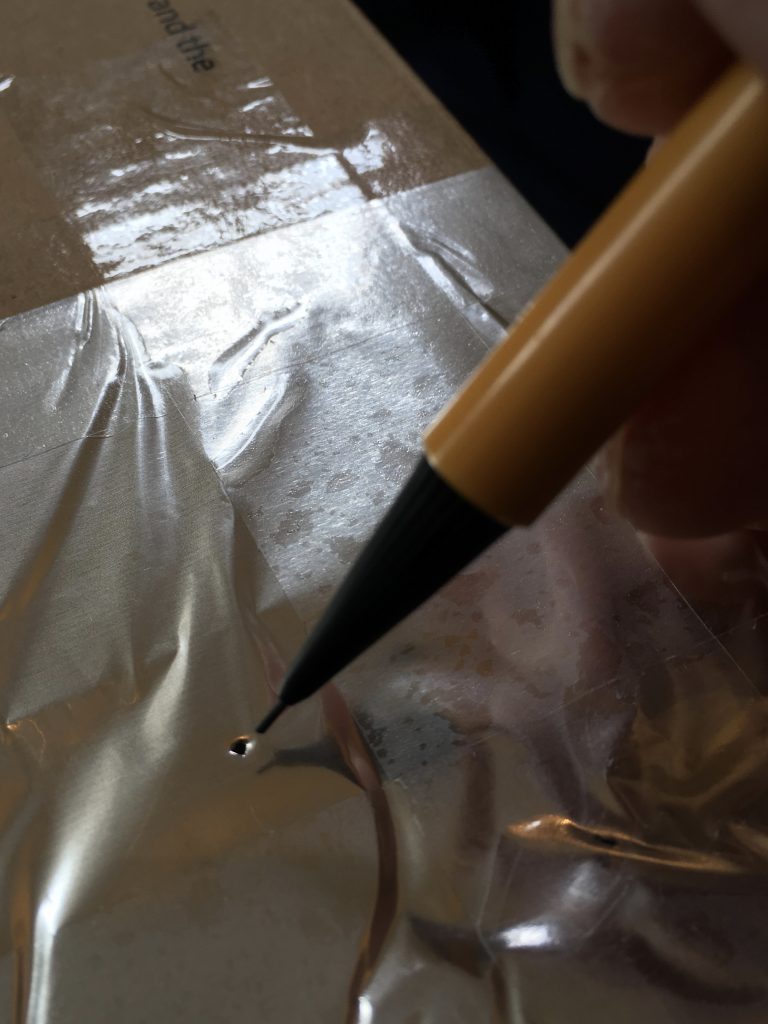
Step 9: make a small hole. 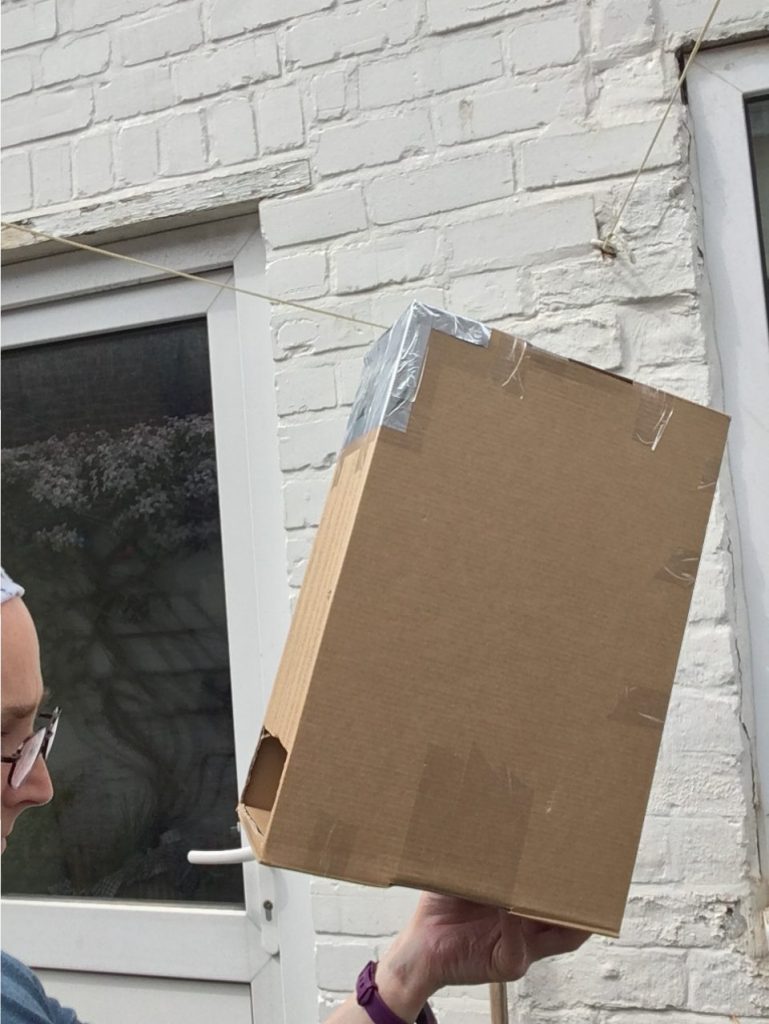
Steps 10 & 11: stand outside with the Sun behind you. 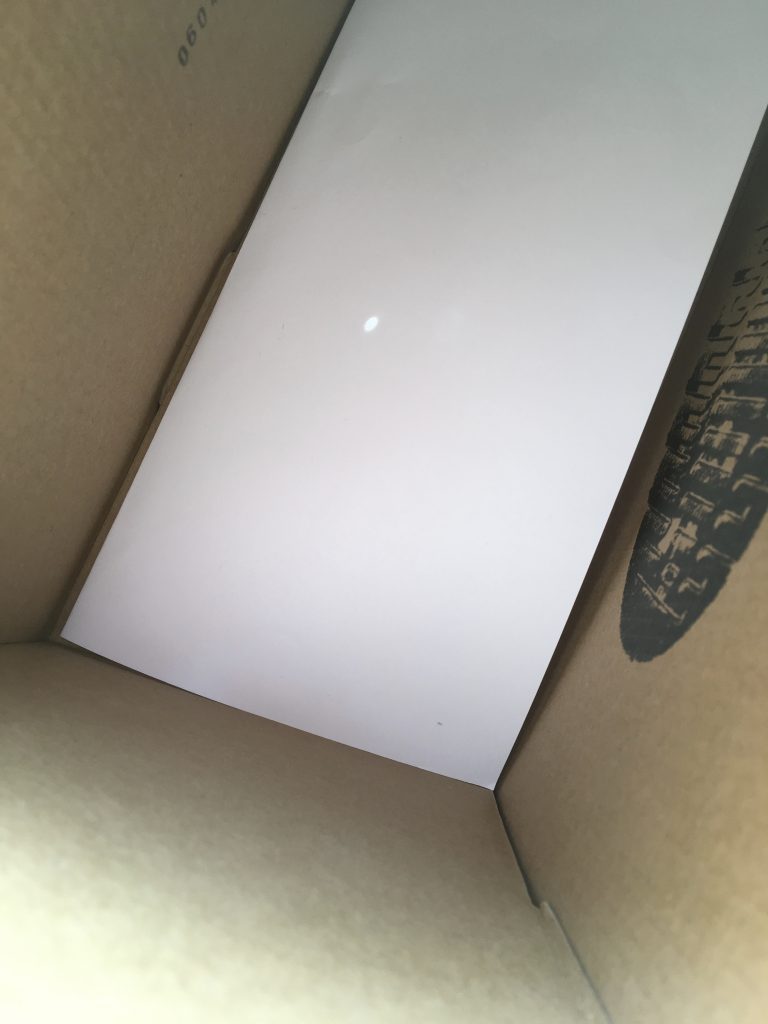
Step 12: an image of the Sun on the screen.
Extension: If you know of a local astronomical society or university physics department it is worth contacting them to ask if they have a safe telescope for solar viewing. Safe telescopes have either very thick filters over the front of the telescope, or contain internal filters of a high specification, both will remove over 99% of the Sun’s light and heat, enabling you to view the Sun safely without risk to your eyesight.
Never try this yourself unless you know what you are doing. Many members of amateur astronomical societies are incredibly knowledgeable and are very happy to arrange safe viewing sessions. You can search for your nearest astronomical society through the directory of the Federation of Astronomical Societies: http://fedastro.org.uk/fas/members-by-county/
Common misconceptions: Sunlight is not just the visible light that we can see with our eyes. There is also a lot of energy in the infrared and ultraviolet parts of the spectrum that we cannot see and this can cause damage to the human eye.
Curriculum links:
- Science KS2 light (year 3; year 6)– recognise that you need light to see things, notice that light is reflected from surfaces, recognise that light from the Sun can be dangerous and that there are ways to protect the eyes.
- Science KS2: Earth and Space (year 5)– can be linked with using the idea of the Earth’s rotation to explain day and night and the apparent movement of the Sun across the sky.
- Design and technology KS2– Make – select from and use a wider range of tools and equipment to perform practical tasks [for example, cutting, shaping, joining and finishing], accurately
Linked activities:
Build a safe solar viewer, a similar activity using cereal boxes – astroEDU: https://astroedu.iau.org/en/activities/1409/build-a-safe-sun-viewer/
Copyright: Megan Argo 2019





